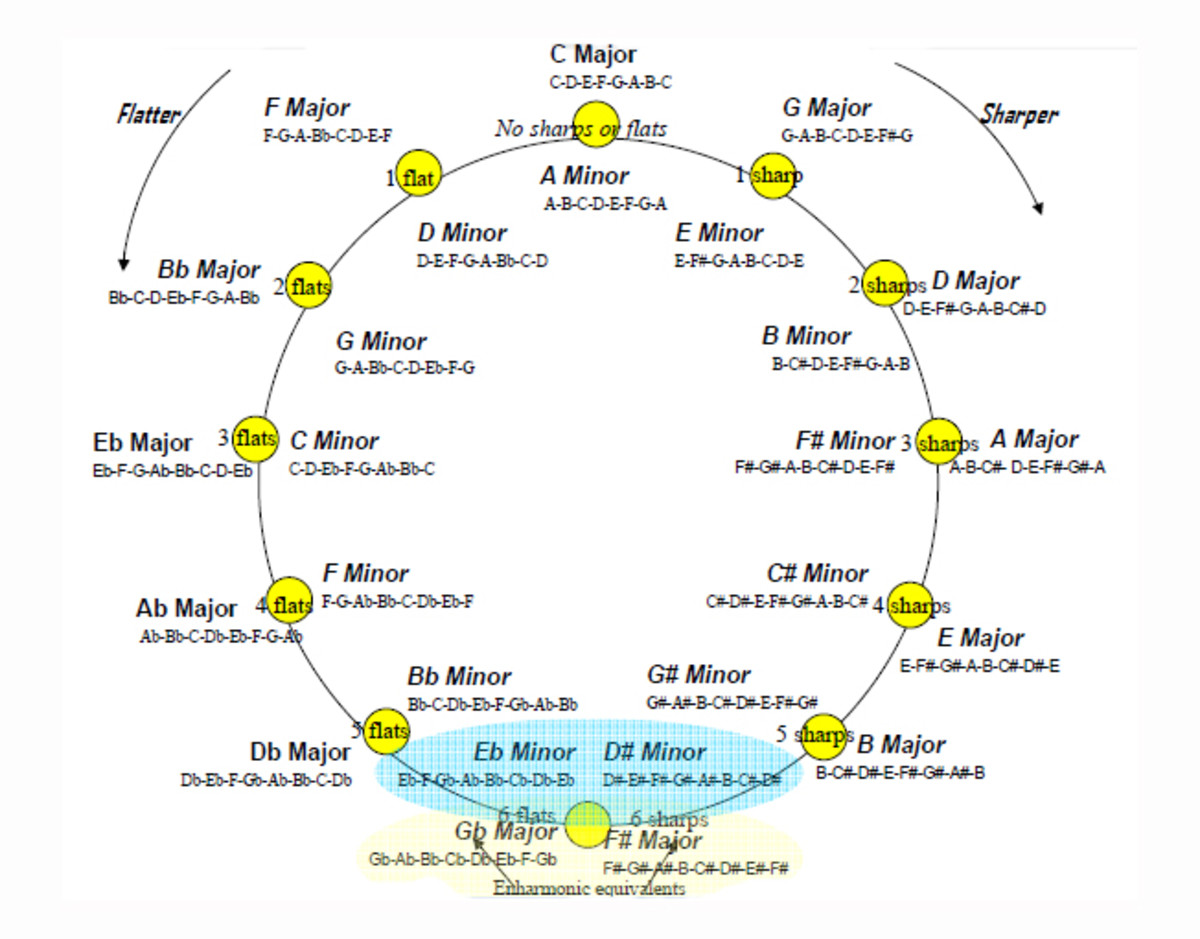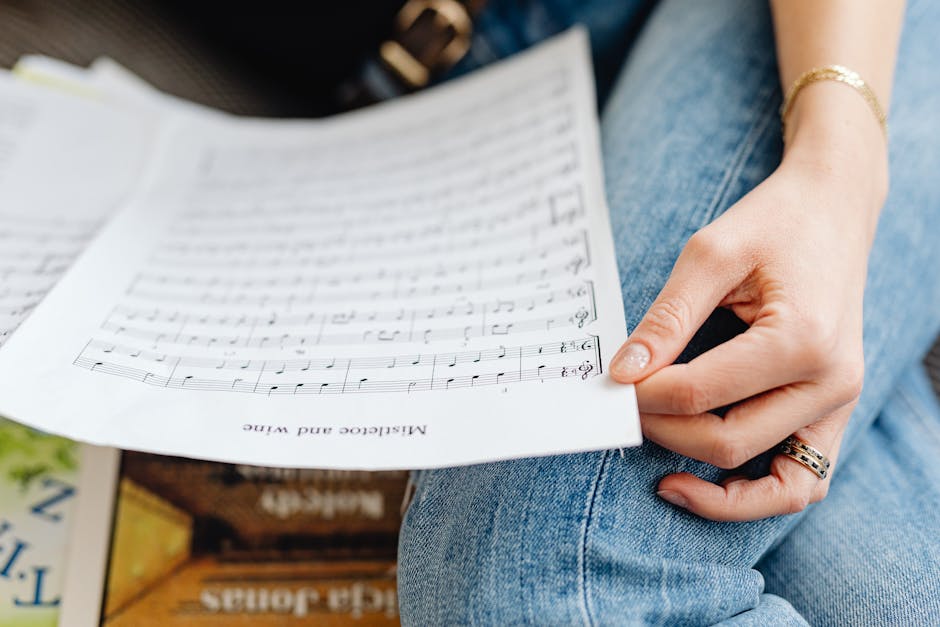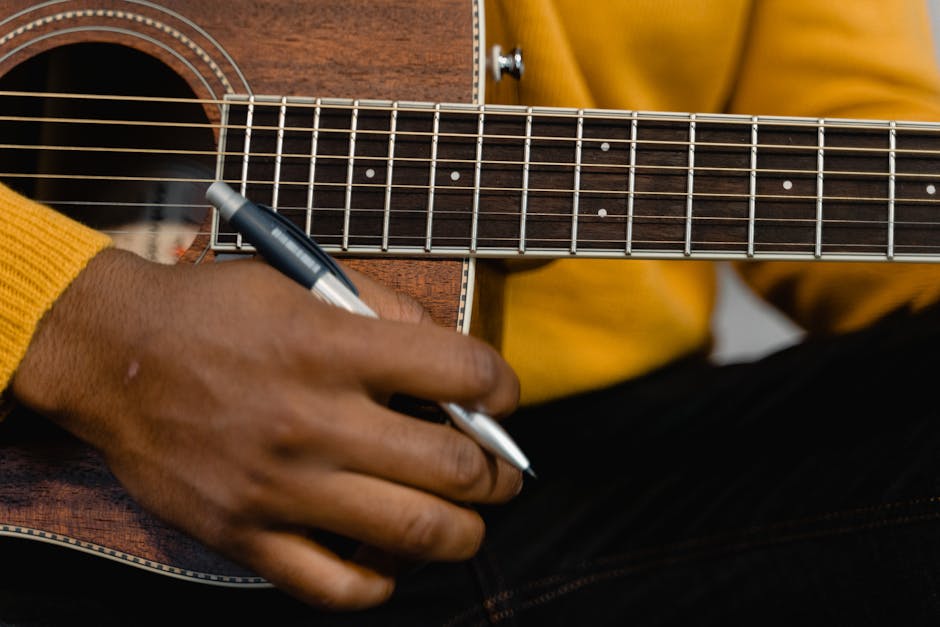Are you tired of feeling like your guitar chord diagrams read like a foreign language? Fret not, dear reader, for we are here to unravel the mystery behind those perplexing little grids that stand between you and your rock star dreams. In this comprehensive guide, we will decode the secrets of guitar chord diagrams and empower you to strum your way to musical greatness. So grab your air guitar and prepare to be enlightened like never before!
Contents
- 1 Understanding the Basics of Guitar Chord Diagrams
- 2 The Anatomy of a Chord Diagram: Decoding Symbols and Lines
- 3 Fingering Positions: How to Read and Apply Them
- 4 Navigating Barre Chords in Diagrams: Simplifying Complex Shapes
- 5 Transitioning Between Chords: Practical Tips for Smooth Movement
- 6 Leveraging Diagrams for Advanced Chord Progressions
- 7 Common Pitfalls and How to Overcome Them: Enhancing Your Diagram Reading Skills
- 8 FAQs
- 9 Rock On!
Understanding the Basics of Guitar Chord Diagrams
So you’ve picked up a guitar and you’re ready to start strumming away, but those pesky chord diagrams are looking like a foreign language. Fear not, my fellow guitarist! Let’s break down the basics of guitar chord diagrams in a way that even your grandma could understand.
First things first, let’s talk about the strings. You’ve got your trusty six strings, starting with the low E string at the top and ending with the high E string at the bottom. Remember, it’s the exact opposite of how your brain wants to think about it, because why make things easy, right?
Next up, those funky dots on the diagram. Each dot represents where you need to place your fingers on the fretboard. It’s like playing a game of connect the dots, but with more pain and frustration. Just kidding, it’s all part of the fun of learning the guitar!
Now, let’s talk about those numbers on the strings. No, they aren’t secret codes or lottery numbers. They actually tell you which finger to use on that string. **Pro tip**: Your index finger is 1, your middle finger is 2, your ring finger is 3, and your pinky is 4. It’s like a handy cheat sheet built right into the diagram!

The Anatomy of a Chord Diagram: Decoding Symbols and Lines
So, you’ve decided to delve into the world of chord diagrams. Good for you! But before you can start strumming away like a rockstar, you need to understand the mysterious symbols and lines that make up these diagrams. It’s like deciphering a musical code, except way more fun.
First up, let’s talk about those mysterious lines that connect all the dots. No, they’re not just there for decoration. Each line represents a string on your guitar, with the vertical lines being the frets. Think of them as musical highways, guiding your fingers to the right notes.
And what about those weird little circles and dots? Fear not, they’re not alien hieroglyphics. Each circle represents a finger placement on a specific fret and string. The number on top of the circle tells you which finger to use. It’s like a musical game of Twister, but way less awkward.
Now, let’s talk about those letters and numbers scattered around the diagram. They’re not just there to confuse you, I promise. The letters represent the chords you’re playing, while the numbers indicate which fret to press down on. It’s like a secret chord language that only cool musicians can understand. Just call yourself a musical Sherlock Holmes, solving the mystery of each chord one string at a time.
Fingering Positions: How to Read and Apply Them
When it comes to playing the guitar, mastering the various fingering positions is key to becoming a rockstar. But don’t worry, deciphering those confusing chord charts doesn’t have to be as intimidating as trying to play a killer solo blindfolded. Let’s break it down, shall we?
First things first, make sure you have a good grasp on the basic finger positions. Remember: index, middle, ring, pinky. It’s like counting 1-2-3-4, but with more rock n’ roll flair. Once you’ve got that down, it’s time to tackle those pesky chord charts.
When you see a chord chart, it’s basically like reading a secret code. Each dot represents where you need to place your fingers on the fretboard. It’s like playing a musical game of connect the dots, but instead of a cute little kitten appearing, you’ll be strumming some sweet tunes.
So, next time you’re faced with a daunting chord chart, remember to channel your inner rockstar, keep those fingers nimble, and don’t be afraid to shred it like you mean it. And who knows, maybe one day you’ll be the next guitar hero, wowing crowds with your killer fingering positions.

Barre chords can be a real pain in the neck…or more accurately, in the thumb. Those complex shapes and finger contortions can make even the most seasoned guitarists break out in a sweat. But fear not, fellow string strummers! We’re here to help you navigate through the treacherous waters of barre chords with diagrams that simplify those mind-bending shapes.
With clear, easy-to-follow diagrams, you’ll be able to visually see where to place your fingers and how to form those pesky barre chords. No more guessing or struggling to figure out which finger goes where – our diagrams will lay it all out for you in a straightforward and simple manner. Say goodbye to finger confusion and hello to barre chord mastery!
By breaking down the complex shapes into step-by-step instructions, you’ll be able to tackle those intimidating barre chords one fret at a time. No more feeling overwhelmed or discouraged by the seemingly impossible finger stretches – with our simplified diagrams, you’ll be well on your way to becoming a barre chord pro in no time.
So grab your guitar, pull up a chair, and get ready to dive headfirst into the world of barre chords with confidence and ease. With our simplified diagrams as your guide, you’ll be navigating those complex shapes like a seasoned sailor navigating choppy waters. Get ready to rock and roll, barre chord style!

Transitioning Between Chords: Practical Tips for Smooth Movement
Moving smoothly between chords can be a real struggle for many musicians. But fear not, we’re here to give you some practical tips that will make transitioning between chords as easy as sliding down a greased-up playground slide.
First off, make sure you’re not gripping your guitar like it’s trying to run away from you. Loosen up those fingers, cowboy! Allow yourself some room to move around without getting tangled up in your own strings.
Another handy tip is to visualize the chord shapes in your mind before you even start playing. It’s like mentally rehearsing a dance routine before hitting the dance floor. Your fingers will thank you for the heads up.
If all else fails, don’t be afraid to cheat a little. There’s no shame in using a sneaky little half-step transition chord to help you slide from one to another. Just make sure you don’t get caught red-handed in the act!
Leveraging Diagrams for Advanced Chord Progressions
Are you tired of playing the same old boring chord progressions on your guitar or piano? Well, it’s time to level up your music game by !
With the help of diagrams, you can easily visualize complex chord structures and experiment with unconventional harmonies. Say goodbye to basic triads and hello to diminished 7ths, augmented 9ths, and everything in between!
By incorporating diagrams into your practice routine, you’ll not only expand your musical vocabulary but also challenge yourself to think outside the box. Who needs a boring old C major when you can play a C#m7b5 followed by a G7alt? Your audience will be blown away by your newfound creativity!
So, grab your instrument, dust off those music theory books, and get ready to take your playing to the next level with the power of diagrams. Who knows, you might just discover the next groundbreaking chord progression that will leave everyone speechless!
Common Pitfalls and How to Overcome Them: Enhancing Your Diagram Reading Skills
So you’ve decided to dive into the world of diagram reading, huh? Brace yourself for some common pitfalls that may slow you down on your journey to becoming a pro diagram interpreter. But fear not, dear reader, for I have some tips and tricks to help you overcome these obstacles and enhance your diagram reading skills!
One of the most common pitfalls in diagram reading is getting overwhelmed by the sheer amount of information presented in a single diagram. Don’t let those complex lines and shapes intimidate you! Take a deep breath, step back, and break the diagram down into smaller, more manageable parts. Focus on one section at a time to avoid feeling like you’re drowning in a sea of arrows and boxes.
Another common pitfall is misinterpreting the symbols and elements used in the diagram. Remember, not all diagrams are created equal! Familiarize yourself with the key or legend provided (if there is one) to ensure you’re correctly interpreting the information. And if all else fails, don’t be afraid to ask for help or consult the diagram’s creator for clarification. There’s no shame in seeking guidance!
Lastly, don’t fall into the trap of assuming you can skim through a diagram quickly and grasp all the necessary details. Diagram reading requires patience and attention to detail. Take your time to study each element carefully, and don’t be afraid to refer back to previous sections if needed. Remember, Rome wasn’t built in a day, and neither are diagram reading skills!
FAQs
Where do I place my fingers on the guitar chord diagrams?
Think of it like a game of Twister but on a smaller scale. Each number on the diagram represents a specific finger placement on the frets. Make sure to stretch those fingers out!
Why are some chords so hard to play according to the diagrams?
Because guitars are sneaky little devils and like to keep you on your toes. But fear not, with enough practice and determination, you’ll be able to conquer those tricky chords like a guitar hero.
What if I can’t reach all the necessary frets on the chord diagrams?
No worries! You can always try different fingerings or use a capo to adjust the pitch. Remember, there’s always more than one way to skin a cat…or play a chord.
How do I read the symbols on the guitar chord diagrams?
It’s like deciphering a secret code, except instead of unlocking a treasure chest, you’re unlocking the sweet sounds of music. Sharp, flat, suspended – it’s a musical adventure waiting to happen.
Can I create my own chord diagrams for unique variations?
Absolutely! Get creative and start drawing your own chord diagrams for those special riffs and melodies. Who knows, you might just stumble upon the next big chord sensation.
Rock On!
Now that you have mastered the art of deciphering guitar chord diagrams, you are one step closer to becoming a true guitar virtuoso! From G to C, F to D, you can now strum your way through any song with confidence and flair. So go ahead, grab your guitar, unleash your inner rockstar, and remember – when in doubt, just google it!



